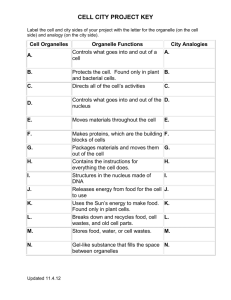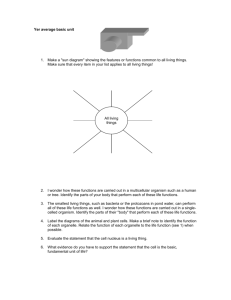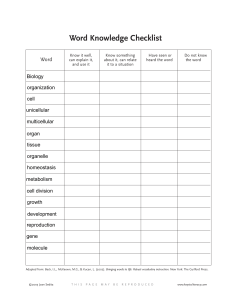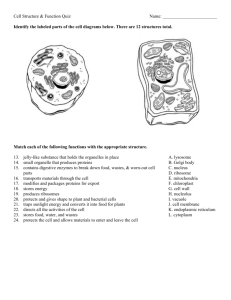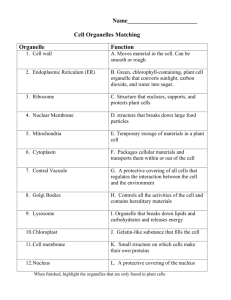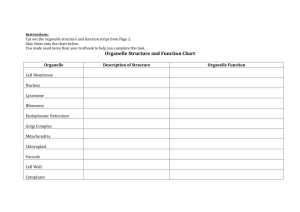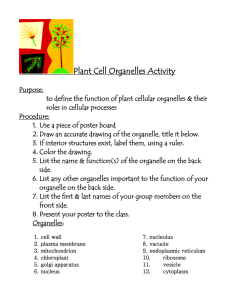cell
advertisement
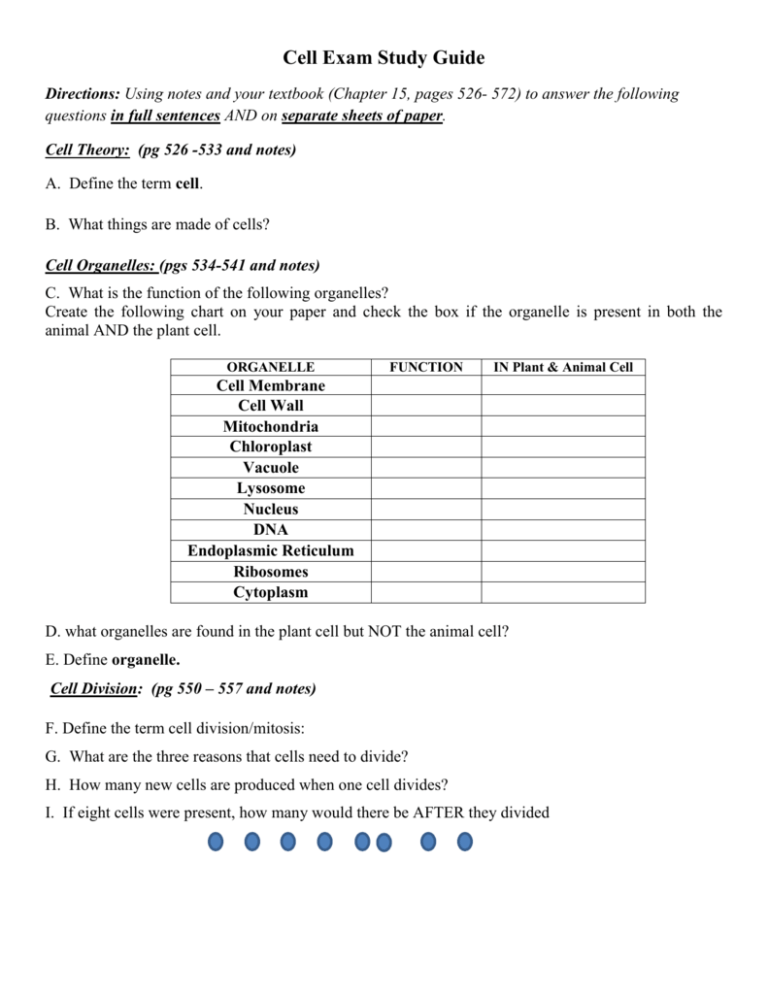
Cell Exam Study Guide Directions: Using notes and your textbook (Chapter 15, pages 526- 572) to answer the following questions in full sentences AND on separate sheets of paper. Cell Theory: (pg 526 -533 and notes) A. Define the term cell. B. What things are made of cells? Cell Organelles: (pgs 534-541 and notes) C. What is the function of the following organelles? Create the following chart on your paper and check the box if the organelle is present in both the animal AND the plant cell. ORGANELLE FUNCTION IN Plant & Animal Cell Cell Membrane Cell Wall Mitochondria Chloroplast Vacuole Lysosome Nucleus DNA Endoplasmic Reticulum Ribosomes Cytoplasm D. what organelles are found in the plant cell but NOT the animal cell? E. Define organelle. Cell Division: (pg 550 – 557 and notes) F. Define the term cell division/mitosis: G. What are the three reasons that cells need to divide? H. How many new cells are produced when one cell divides? I. If eight cells were present, how many would there be AFTER they divided Cell Structure/Function: (pg 542 – 543 and notes) J. Define cell specialization or differentiation. K. Why do cells have different shapes? Unicellular vs. Multicellular :(pg 542 and notes) L. Define unicellular and multicellular and give an example of each. Copy the chart below on your paper. Type of Organism - Definition Example UnicellularMulticellular - M. How are the cells of a unicellular organism different than a multicellular organism? Levels of Organization: (558 -569 and notes) N. Recreate the table below and list the levels or organization of the body from smallest to largest. Define each level. Level Level of Organization Definition Example Level 1 Level 2 Level 3 Level 4 Level 5 O. What level does each picture represent? a) __________ b) __________ c) __________ d) ___________ e) ____________ P. Recreate the table below and define the function of each of the following systems. System Function Digestive System Respiratory System Excretory System Circulatory System The circulatory, excretory, respiratory and digestive systems are all designed to help the cells get the things it needs to make ENERGY or release the wastes from making ENERGY. Label the diagram below to show the two things that the cells need to make energy and the two wastes released as a result of making energy. Cell wastes from Energy Making 1 . 2 . 1 . 2 . What two systems are responsible for bringing in the needs of the cell for energy making? O._________________________________________________________________________________ What two systems are responsible for taking away the wastes of energy making? P._________________________________________________________________________________ What organelle is responsible for using the needed materials to make the energy? Q._________________________________________________________________________________ Q. What two systems are responsible for bringing in the needs of the cell for energy making? R. What two systems are responsible for taking away the wastes of energy making? S. What organelle is responsible for using the needed materials to make the energy?
